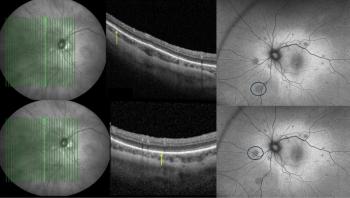
PS-OCT: a promising new diagnostic tool for RPE diseases
Polarisation-sensitive optical coherence tomography (PS-OCT) is a promising new tool for diagnosis, disease follow-up and the evaluation of new treatment strategies in disease affecting the retinal pigment epithelium .
Polarization-sensitive optical coherence tomography (PS-OCT) is a promising new tool for diagnosis, disease follow-up and the evaluation of new treatment strategies in disease affecting the retinal pigment epithelium (RPE), according to a study published in the February issue of the British Journal of Ophthalmology.
Stephan Michels and colleagues from the University of Vienna, the Medical University of Vienna, Austria, University Hospital Zurich, Switzerland and Moorfields Eye Hospital, London, UK evaluated pathological changes of retinal pigment epithelium using PS-OCT in 44 eyes (22 patients).
The RPE scrambles the polarization state of backscattered light (i.e. acts as a depolarizing layer), while the polarization state of transmitted light is maintained. In patients with RPE pathologies, irregularity, elevation, thickening or absence of the RPE is readily visualized by exploiting the depolarization information. Polarization scrambling in the sensory retina can be found in cases of advanced dry macular degeneration. Sclera and fibrosis show characteristic birefringence in PS-OCT.
The authors of this study believe that PS-OCT allows tissue identification based on polarization scrambling and birefringence, thus providing additional information on RPE pathologies.
Newsletter
Get the essential updates shaping the future of pharma manufacturing and compliance—subscribe today to Pharmaceutical Technology and never miss a breakthrough.













































